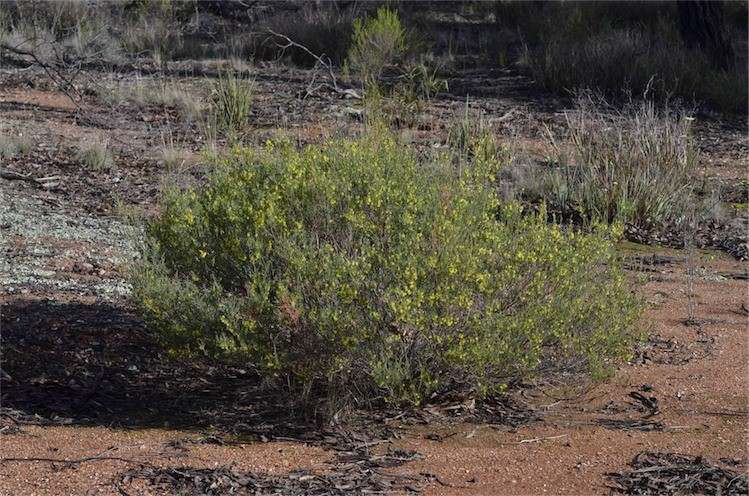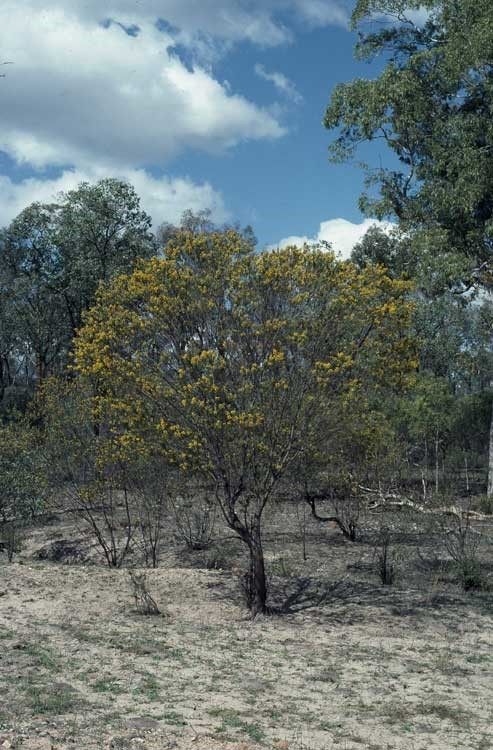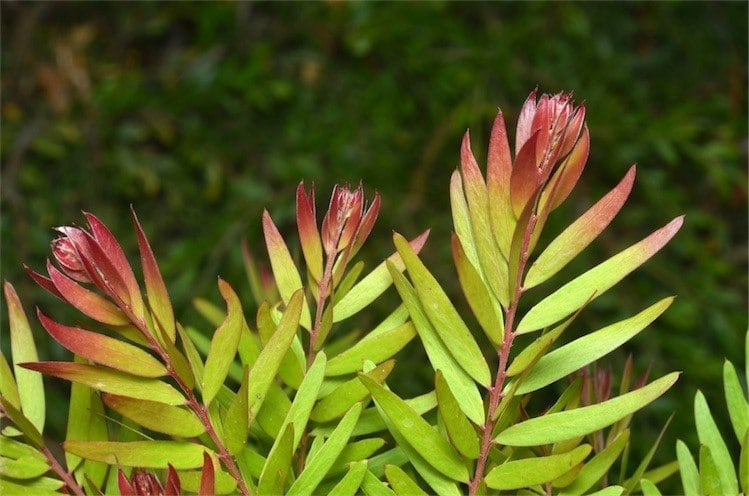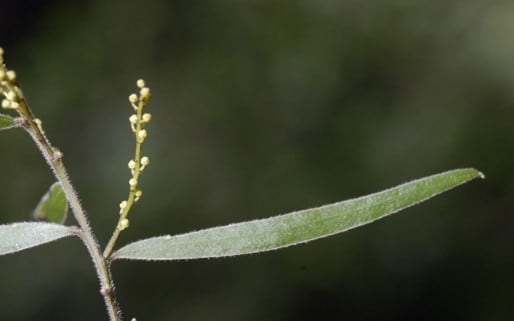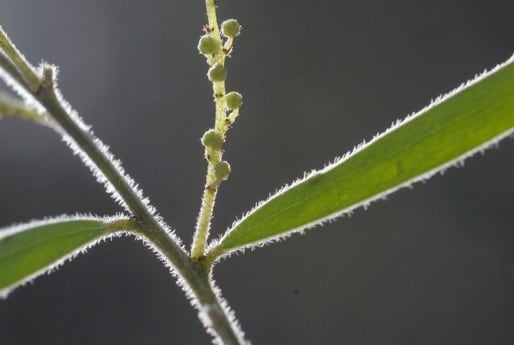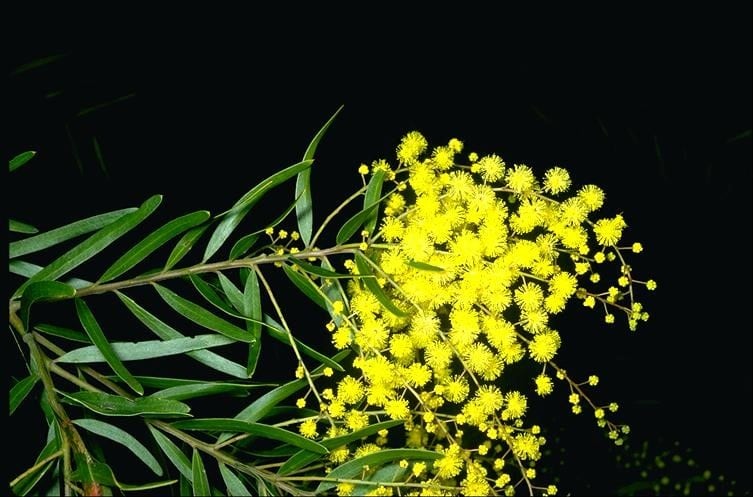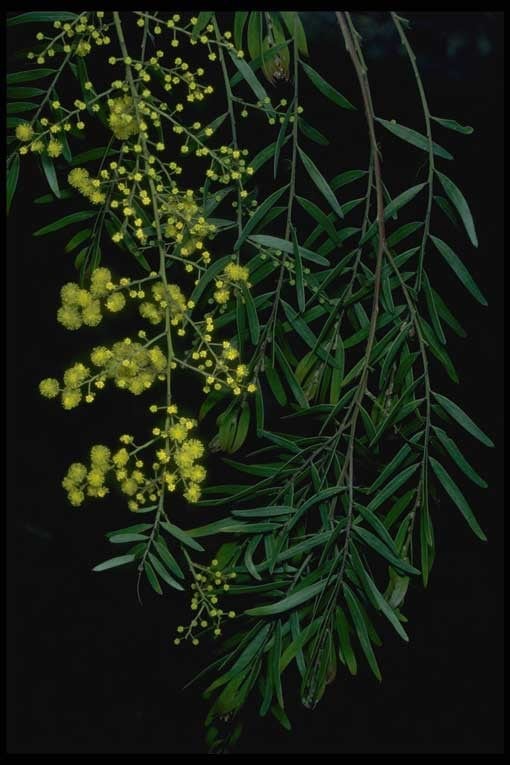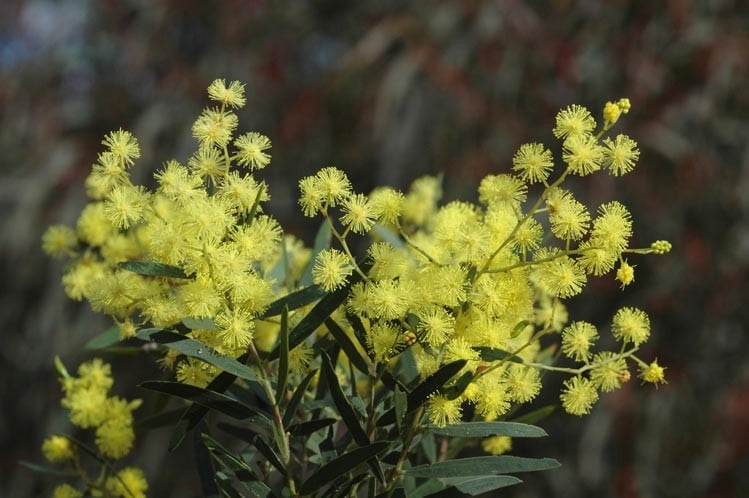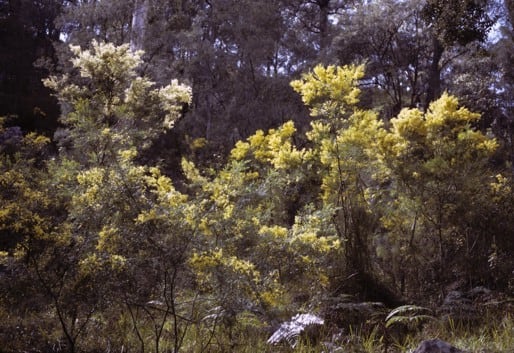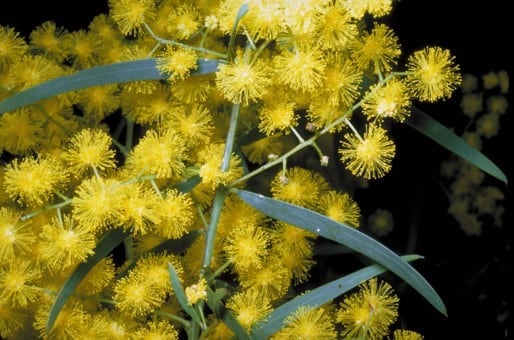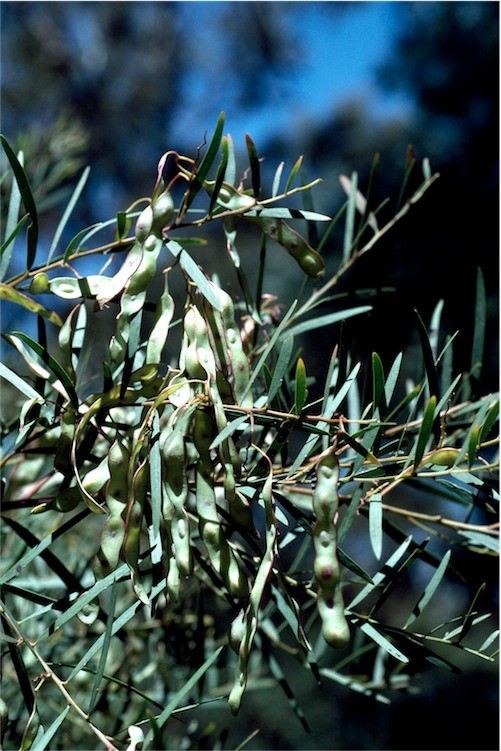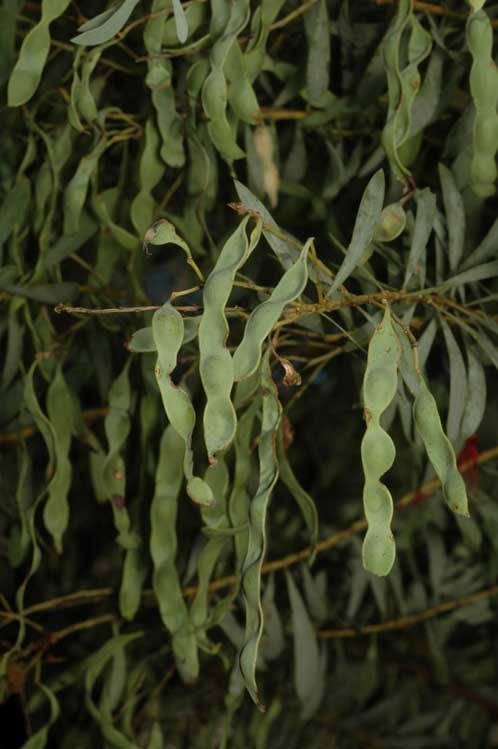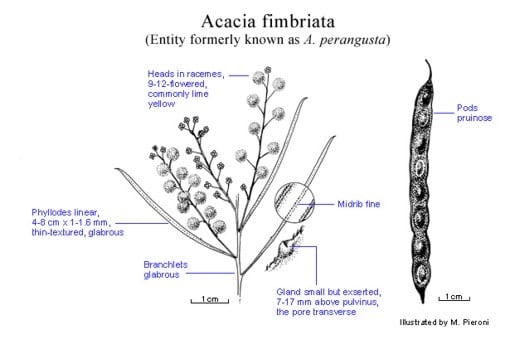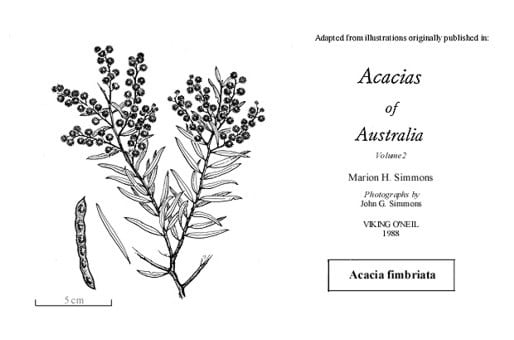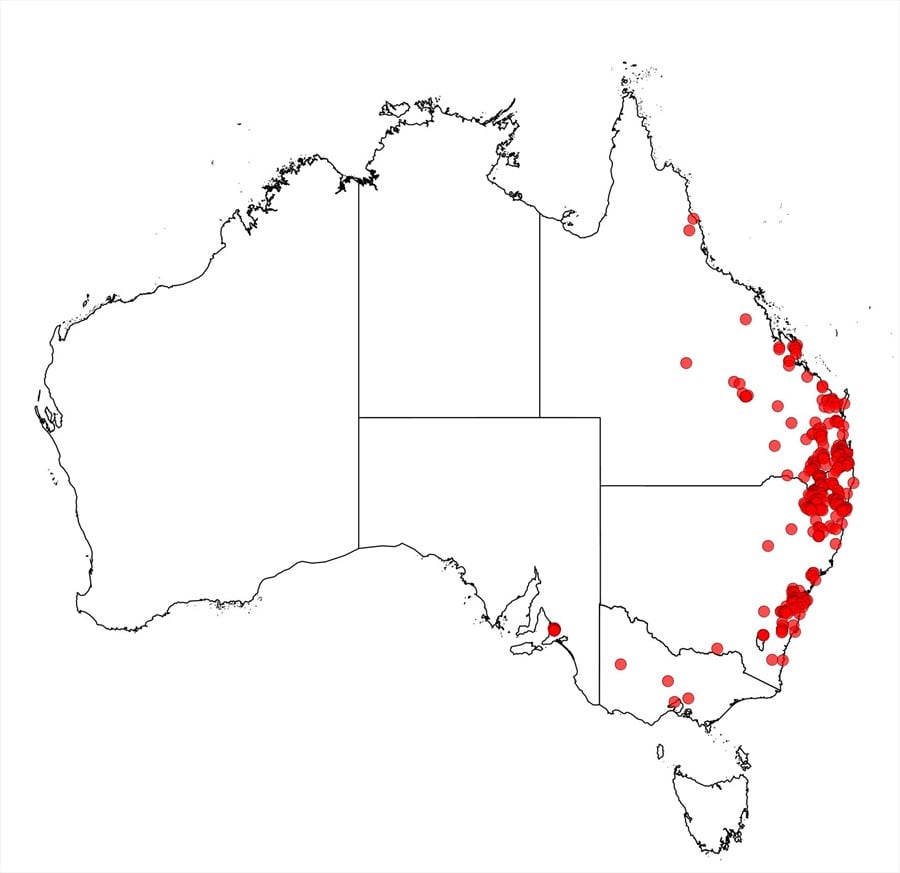Acacia fimbriata A.Cunn. ex G.Don
WATTLE
Acacias of Australia
Common Name
Fringed Wattle, Brisbane Golden Wattle, Eprapah Wattle (the entity formerly called A. perangusta)
Family
Fabaceae
Distribution
Occurs in eastern Australia mainly in coastal and adjacent tableland areas from near Nerriga, N.S.W., N to near Yeppoon, Carnarvon Natl Park and Ravenshoe, Qld.; it is incipiently naturalised in Vic. A similar disjunction pattern involving N.S.W. and Qld occurs also in A. falcata and A. falciformis.
Description
Shrub or tree to c. 7 m high. Branchlets slender, with indumentum of short, spreading to appressed hairs often confined to the fine ribs, sometimes glabrous. Phyllodes linear to narrowly oblong-elliptic or narrowly lanceolate, usually 2–5 (–8) cm long and (1–) 2–5 mm wide with l:w = 5–25 or more, thin-textured, acute to obtuse-mucronulate, thin, sparsely to densely fimbriolate with appressed hairs, sometimes glabrous; midrib fine; lateral nerves few and obscure; glands 1, rarely 2, ±prominent but usually not or only slightly exserted, with the lowermost 1–6 (–17) mm above pulvinus. Inflorescences racemose; raceme axes 1.5–7.5 cm long, slender, glabrous or hairy; peduncles 1.5–5 mm long, slender, glabrous or hairy; heads showy, globular, 8–20-flowered, usually bright golden. Flowers 5-merous; sepals c. 3/4-united, often partially separating with age. Pods to 8 cm long, 5-9 mm wide, firmly chartaceous, commonly pruinose, glabrous. Seeds longitudinal, oblong-elliptic, 4–5 mm long, subshiny, black; aril clavate.
Habitat
Favours moist sites near streams and on margins of light rainforest, and occurs on hillsides as an understorey in eucalypt woodland or open forest.
Specimens
Qld: 8-10 km NE of Byfield State Forest area, G.N.Batianoff 509 & T.J.McDonald (BRI); Eprapah Ck, c. 5 km W of Victoria Point, L.Pedley 798 (BRI); Blackdown Tableland, B.Golding 9 (BRI); Burrum R., C.T.White 6286 (BRI). N.S.W.: 6.4 km by road E of Deepwater, E.F.Constable 7082 (NSW, PERTH); Bolivia Hill, 37 km S of Tenterfield on New England Hwy, 4 Jan. 1969, M.Tindale s.n. (NSW, PERTH). Vic.: Edge of Taradale township, 10 Aug. 1999, I.C.Clarke s.n. (MEL 2063888).
Notes
Common in cultivation where it sometimes hybridises with A. macradenia (sect. Phyllodineae) and possibly A. chrysotricha (sect. Botrycephalae). A dwarf cultivar is recognized for A. fimbriata, see E.Brueggemeier, Australian Plants 25: 264 (2010) for description and photograph.
A variable species, especially in phyllode dimensions and indumentum density, fide L.Pedley, Austrobaileya 1: 284 (1980). Acacia perangusta which was recognized by B.R.Maslin, Fl. Australia 11A: 309 (2001) is here treated as conspecific with A. fimbriata following L.Pedley, Austrobaileya 6: 983 (2004). This glabrous entity which is characterized by very narrow, glabrous phyllodes and exserted gland located 7–17 mm above pulvinus is commonly cultivated as an ornamental in south-eastern Qld. Glabrous individuals of A. fimbriata are uncommon and not considered worthy of formal rank. One Qld specimen (from between Yarraman & Nanango, W.J.F.McDonald 1585, BRI) has atypically short phyllodes, c. 1 cm long. The flower-heads are normally light golden to mid-golden, but a variant with cream flower-heads is known from a population of otherwise normal coloured individuals in the Blue Mtns, N.S.W. (e.g. B.R.Maslin 5888A, PERTH). Plants from Darling Downs, Qld, have much brighter coloured flower-heads than coastal plants within that State, fide B.A.Lebler, Wildfl. SE Queensland 2: 63 (1981).
G.Bentham, Fl. Austral. 2: 371 (1864), treated A. fimbriata as conspecific with A. prominens and also included elements of it under A. linifolia. J.H.Maiden, Forest Fl. New South Wales 5: 29, 34, 61–65, pl. 157 (1911) and V.S.Summerhayes, Bot. Mag. 155: t. 9256 (1931) discussed the confusion surrounding these three names. Acacia prominens is commonly a taller plant than A. fimbriata and has phyllodes which are 5–12 mm wide, grey-green to glaucous (green to greyish green in A. fimbriata), never fimbriolate and possessing more prominent glands which are generally further removed from the pulvinus. Acacia linifolia is distinguished by its glabrous phyllodes 0.8–2.5 mm wide, gland 5–15 mm above the pulvinus and 6–12-flowered, creamy yellow heads.
FOA Reference
Data derived from Flora of Australia Volumes 11A (2001), 11B (2001) and 12 (1998), products of ABRS, ©Commonwealth of Australia
Author
Edited by B.R.Maslin
B.R.Maslin
This identification key and fact sheets are available as a mobile application:
URL: https://apps.lucidcentral.org/wattle/
© Copyright 2018. All rights reserved.
